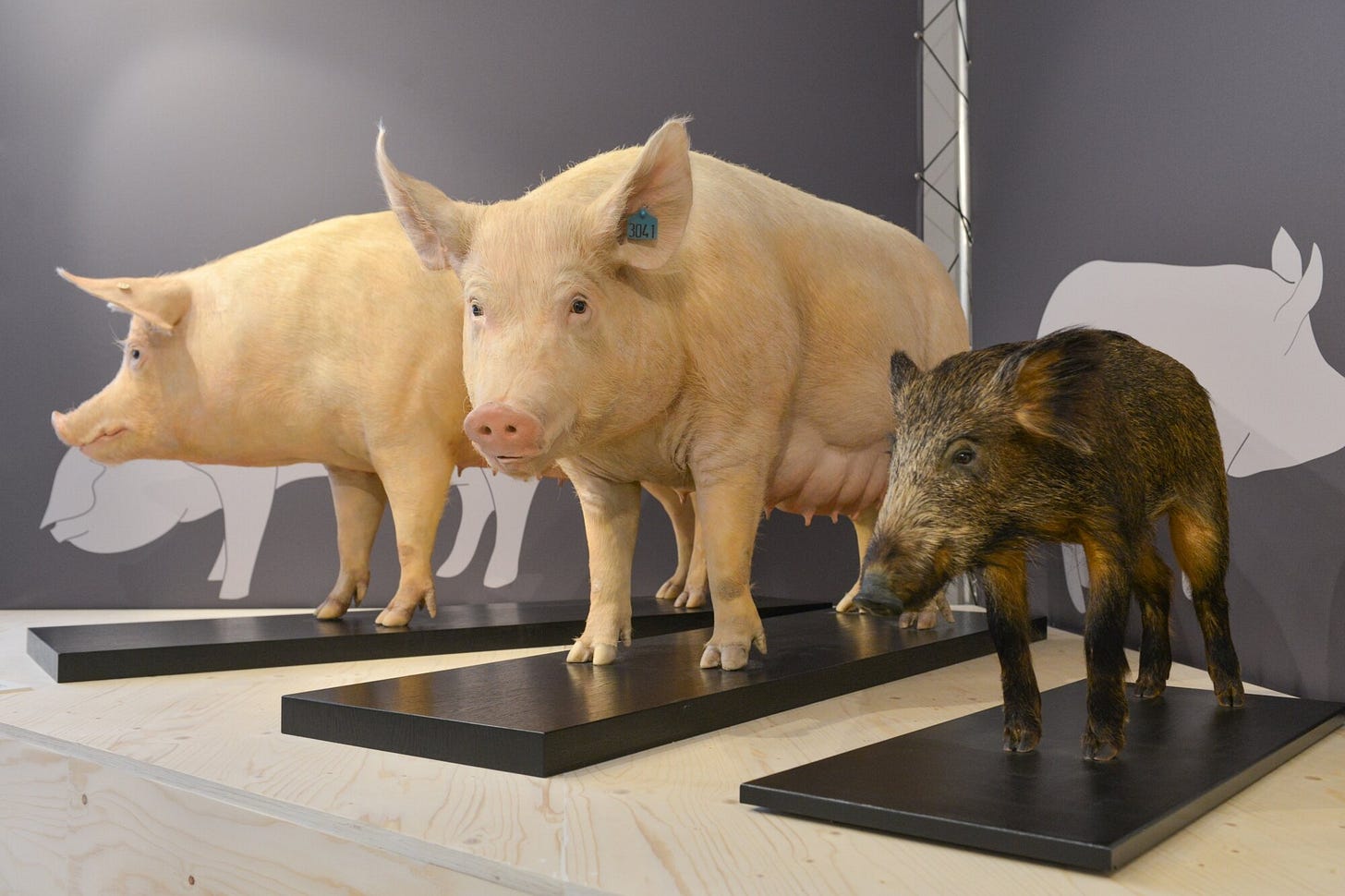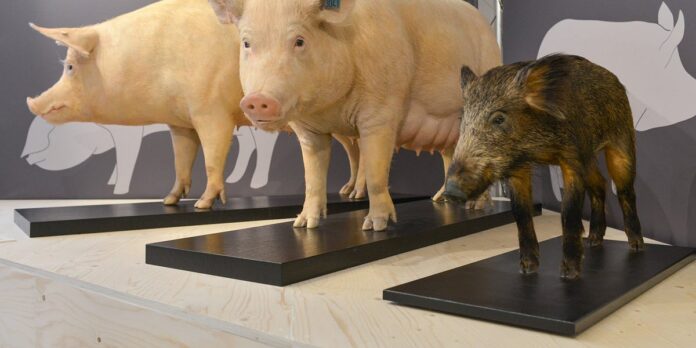The evolution of species is often framed as a gradual process unfolding over millennia. Yet, sometimes evolution speeds up—not through natural selection but through human intervention. A new study, Evolution under Intensive Industrial Breeding: Skull Size and Shape Comparison Between Historic and Modern Pig Lineages by Ashleigh Haruda and colleagues, reveals how industrial breeding has dramatically reshaped the skulls of domestic pigs within a mere century.

Their research presents an unexpected reality: despite being bred separately, two lineages of German domestic pigs—Deutsches Edelschwein (DE) and Deutsche Landrasse (DL)—have evolved strikingly similar skull shapes due to shared industrial selection pressures. This convergence, occurring within approximately 100 generations, underscores the profound impact of human-directed breeding.
The researchers analyzed 135 skulls spanning a century, using a three-dimensional landmark-based geometric morphometric approach. Their goal was to determine how breeding practices influenced skull morphology.
“We find expected differences in skull shape between wild and domestic pigs, but also convergence between the two domestic lineages through the century of directed breeding, despite population segregation,” the authors note.
By comparing the skulls of pigs from the early 20th century to those of modern pigs, the study found that industrial selection pressures led to a shortening of the snout and a flattening of the forehead. Remarkably, these changes occurred even though skull shape was not a primary target of selection.
The fact that two separate pig breeds independently evolved similar skull shapes suggests that selection pressures for meat production inadvertently altered their cranial morphology. The researchers argue that this is evidence of phenotypic convergence—a process where unrelated populations develop similar traits due to shared environmental pressures.
The study’s results highlight a curious paradox. While the skulls of wild boars remained largely unchanged, domestic pigs underwent rapid cranial transformation, even though their breeding programs did not specifically target skull morphology.
One of the most significant findings was that historical domestic pig skulls exhibited a distinctive “dished” facial profile—characterized by a concave forehead—which has since been lost. This shift, the researchers argue, reflects broader selection pressures for leaner, more muscular pigs.
“Selection in domestic pig populations following World War II changed to prioritize traits such as sexual maturity, fertility, carcass size, and lean muscle production,” the study explains.
Essentially, as breeding goals shifted away from physical conformation and toward physiological traits, pig skulls morphed as a byproduct.
The convergence of skull shapes in both breeds suggests that industrial farming has created a homogenized pig phenotype, prioritizing efficiency over genetic diversity. The findings echo broader concerns about the loss of genetic variation in modern livestock.
Another intriguing element of the study was the potential role of diet. While pigs today are raised on a high-protein pellet-based diet, their ancestors likely had more varied feeding opportunities.
Historically, pigs engaged in foraging and rooting behaviors, which could have influenced their skull development. However, the researchers caution against over-attributing these changes to diet alone.
“The historic individuals were raised in a paved courtyard with no opportunity to engage in these behaviors,” they note, suggesting that direct selection for productivity may have played a larger role than dietary changes.
The study adds to a growing body of research suggesting that human-driven selection can override genetic isolation and accelerate evolutionary change.
Charles Darwin famously argued that significant morphological change requires millions of years. Yet, studies like this suggest that artificial selection can drastically reshape species in much shorter timescales.
The research also raises ethical questions. As industrial breeding intensifies, how much genetic and morphological diversity are we willing to sacrifice for efficiency? The authors point out that loss of diversity may have unintended consequences, including increased susceptibility to disease and physiological disorders.
One well-documented example is the porcine stress syndrome, a genetic disorder linked to intensive breeding for fast growth and lean meat. The study suggests that similar breeding pressures may be affecting pig skull morphology in ways that scientists are only beginning to understand.
This study serves as a cautionary tale about the unintended consequences of industrial farming. The transformation of the domestic pig’s skull over just 100 years is a stark reminder that human intervention can drive evolutionary change at an unprecedented pace.
“The pressure from human selection over 100 generations is enough to significantly vary phenotypes in domestic pigs in comparison with contemporary local wild boar populations,” the authors conclude.
As we continue to shape the biology of the animals we depend on, we must consider the long-term consequences of our actions—not just for the species we breed, but for the ecosystems they inhabit. If pigs can undergo such dramatic change in a century, what other evolutionary shifts are unfolding beneath our notice?
For further exploration of the effects of artificial selection on domesticated animals, consider these studies:
-
Drake AG, Klingenberg CP (2008). The pace of morphological change: historical transformation of skull shape in St. Bernard dogs. Proc. R. Soc. B. 275(1630), 71-76. DOI: 10.1098/rspb.2007.1169
-
Rubin CJ et al. (2012). Strong signatures of selection in the domestic pig genome. Proc. Natl Acad. Sci. USA. 109(48), 19529–19536. DOI: 10.1073/pnas.1217149109
-
Marshall FB, Dobney K, Denham T, Capriles JM (2014). Evaluating the roles of directed breeding and gene flow in animal domestication. Proc. Natl Acad. Sci. USA. 111(17), 6153–6158. DOI: 10.1073/pnas.1312984110
-
Wilkins AS, Wrangham RW, Fitch WT (2014). The ‘domestication syndrome’ in mammals: a unified explanation based on neural crest cell behavior and genetics. Genetics. 197(3), 795–808. DOI: 10.1534/genetics.114.165423

